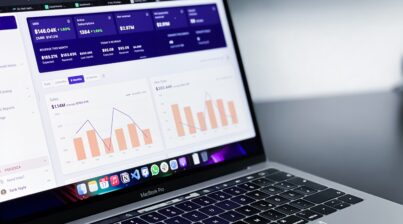No, we’re not talking about that flaky, buttery, fruit-filled pastry… we’re talking about metrics. People metrics within an organization.
When an organization starts to focus on people metrics, turnover rates are the first piece of data leaders want to know. Your turnover rate is how many people are leaving your organization during a period of time. It is calculated by taking the number of people who left the organization during a given time frame divided by the average number of people within that population. Multiply that decimal by 100 and you’re left with the percentage of your people that have left the company.
–
–
Turnover is typically looked at on an annual basis, like how many people left the organization in 2018. When that rate starts to trend higher than expected or wanted, you must drill down further to determine the cause. You can begin to look at the monthly turnover rate or maybe by quarter. You’ll also want to drill down by department, job title, location, tenure, age, ethnicity, and any other relevant grouping that your organization has. At those levels, you’ll be able to see if your high turnover is organization-wide or just in specific areas.

Now, this is where it starts getting more fun. Let’s say you’re looking at turnover by job title and find that over the course of 2018 there’s a high turnover rate for hourly job titles. Now, are you going to present to your business leaders just the percentages or use visualizations? You can show the data in a bar chart, pie circle, or a line graph? What if your business leaders want to know how that compares to other job groups or from last year at this time vs now? And is there only one person making these calculations, or could the numbers be calculated by different people? How do you ensure you are accurately calculating the right numbers and comparing apples to apples, not apples to oranges? Did you consider if all your folks are in the right job title? These are just a few thoughts that cross the mind of an analyst tasked with looking at turnover.
—
Okay, now we’ve crossed over these hurdles…
—
We identified some turnover rates that we confidently believe are accurate to the best of our ability. You have turnover rates that are drilled down ten different ways, but those percentage rates don’t mean anything to business leaders if you can’t show how it impacts the business. It’s key to communicate how high turnover rates create more costs for the organization, whether those are monetary or intangible costs. Monetary costs come from the resources needed to source, onboard, and train the replacement. Also, any overtime paid to the remaining teammates or temporary employees to pick up the work. The intangible costs like decreased morale and lost productivity could be a bit harder to measure but should not be ignored. High turnover can even impact the quality of work which can, in turn, impact customer service and the relationships with clients.
With all that said, people metrics and looking at your organization’s turnover is important. It can be a time consuming and headache inducing task that not all HR teams have the resources to dedicate to. If you would like to better manage, track, and analyze your turnover metrics and all other HR data without the time and the hassle, please schedule a demo to view our HR analytics dashboard.













